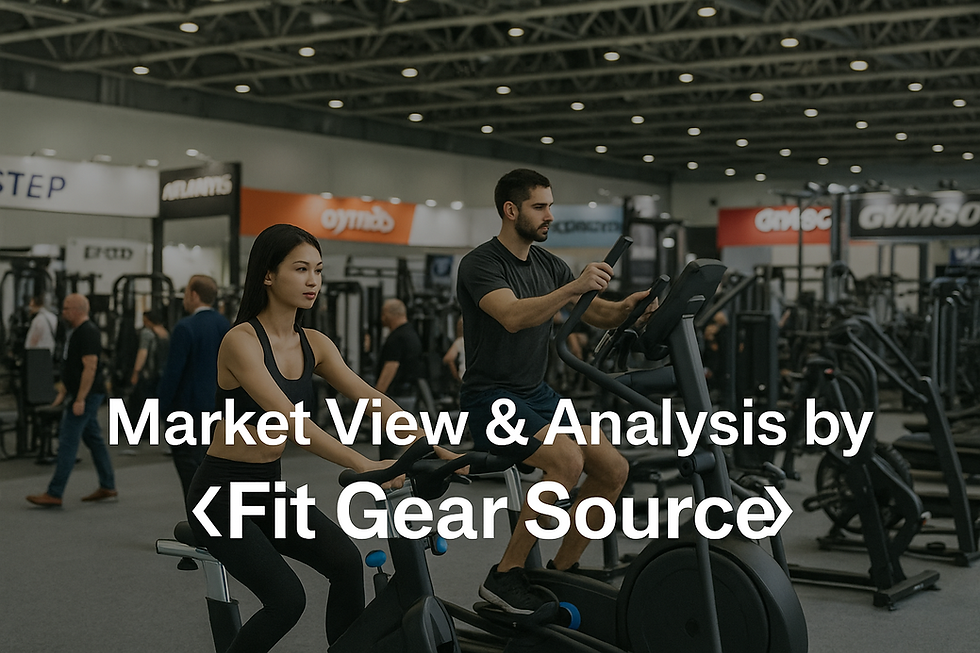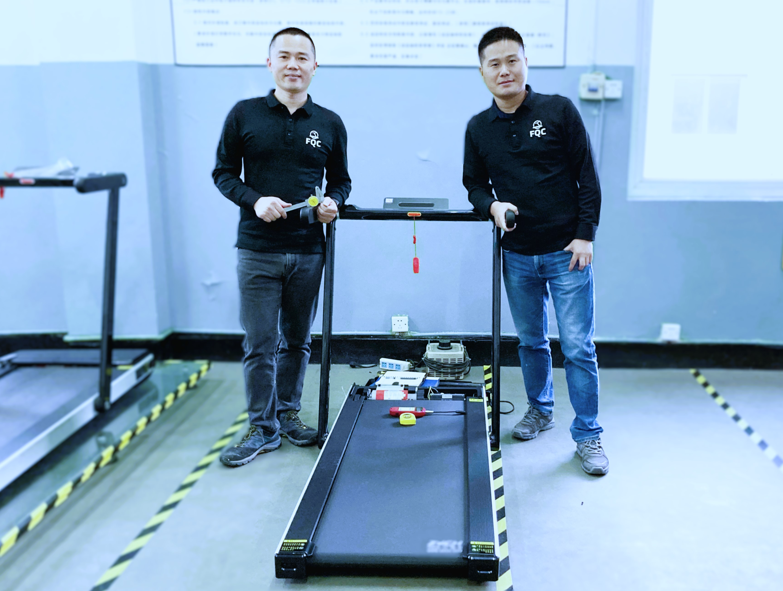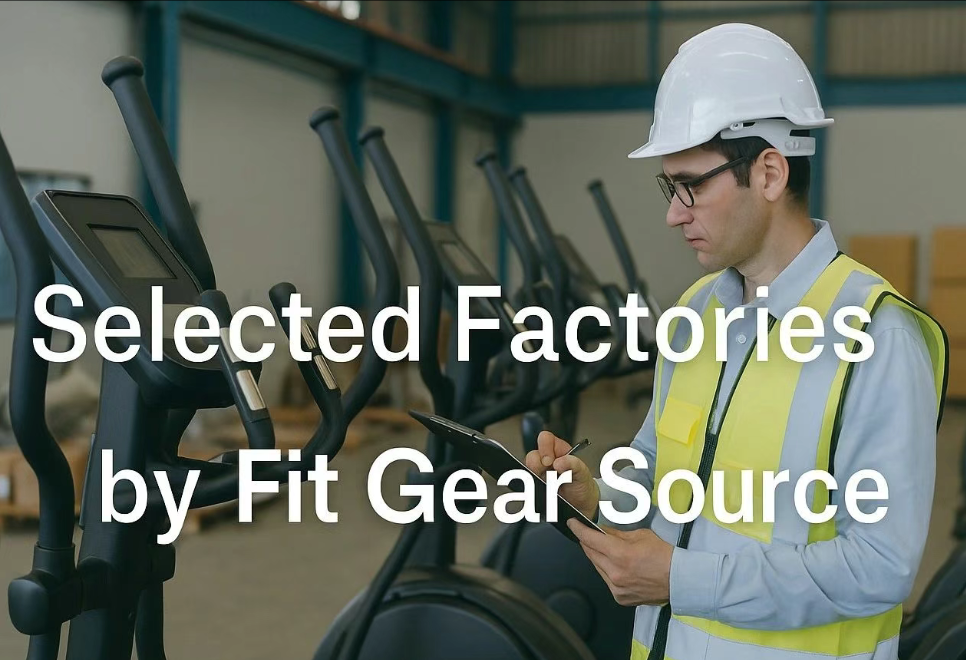[Roger’s Column] Factory Quality Audit for International Fitness Equipment Buyers
- Roger Yao
- Aug 16
- 5 min read

Supplier Quality Audits for International Fitness Equipment Buyers
Abstract
This article outlines the fundamental practices international buyers adopt when conducting supplier quality management evaluations and audits, with an overview of common audit items. It highlights that supplier audits in the fitness equipment sector are often simplified, lacking in technical depth, and sometimes burdened by high costs.
By examining the shift in trade models from OEM to ODM, and the challenges arising from buyers’ general lack of personnel with professional manufacturing backgrounds, the article offers four key recommendations for buyers who have yet to establish an effective supplier audit mechanism:
Develop an audit process tailored to the company’s actual needs.
Place particular emphasis on auditing critical manufacturing processes.
Ensure collaborative support from product development and after-sales departments.
Use quality audits to foster constructive engagement with suppliers.
Keywords:
Buyer, Fitness Equipment, Supplier Audit, Quality Management, Critical Control Points
Author: Roger Yao (Condensed Version)

1. Supplier Audits in International Procurement and Their Objectives
1.1 Definition of Supplier Audit
A supplier audit is a structured assessment by the buyer to evaluate the supplier’s compliance, manufacturing capability, and the robustness of its management systems. In international trade, it is now standard practice for overseas customers to conduct a new supplier audit (often referred to as a “factory audit”) before formalizing cooperation with Chinese suppliers.
By audit scope, supplier audits can be divided into:
Quality management audits (quality-focused factory audits)
Social compliance audits (covering labor rights, occupational safety, and environmental management)
This article focuses on supplier audits centered on quality management.
A quality management audit examines production control and quality assurance systems, identifies potential risks through on-site inspections, provides evaluation reports, and issues corrective action recommendations for non-conformities.
1.2 Objectives of a Supplier Quality Audit
International buyers typically conduct supplier quality audits for three main purposes:
- Verification of Supplier InformationBuyers often identify potential suppliers via B2B platforms, trade shows, or online searches. To verify the authenticity and compliance of supplier information, buyers dispatch auditors or engage third-party agencies for on-site verification—this is the foundational step of any quality audit.
- Evaluation of a Supplier’s Capability to Deliver Conforming ProductsThe audit assesses manufacturing capabilities and quality management maturity. By observing production floors, management workflows, and the execution of quality systems, buyers determine whether the supplier can consistently produce reliable, compliant products, forming the basis for inclusion in the Approved Vendor List (AVL).
- Identification of Corrective Actions and Preventive MeasuresFor any non-conformities found, the buyer establishes a communication mechanism with the supplier to develop corrective action plans, thereby mitigating quality risks. The supplier’s responsiveness, timeliness, and effectiveness in implementing these measures also serve as indicators of its improvement capability and willingness to cooperate.
2. Common Elements of a Supplier Quality Audit
Although audit methodologies vary across customers, core audit items are often summarized under the “5M1E” framework—Man, Machine, Material, Method, Environment, and Measurement—with questions serving as the entry point.
2.1 Personnel & Organization
Is the organizational structure clearly defined?
Are roles and responsibilities well-documented?
Is headcount and departmental allocation adequate?
Have key personnel received appropriate training and qualifications?
What is the staff turnover rate, and is seasonal fluctuation manageable?
2.2 Equipment & Facilities
Is the workshop layout and process flow optimized?
Do the quantity and condition of equipment meet process and capacity needs?
Are key machines maintained as scheduled, with records available?
Are critical equipment calibrated regularly by accredited bodies?
2.3 Production Materials
What is the ratio and source of in-house versus outsourced components?
Are raw materials sourced from approved vendors, with full traceability?
Are key material suppliers systematically and effectively evaluated?
Have critical raw materials obtained relevant certifications?
2.4 Management Methods
Are policies, objectives, and procedures clearly established?
Are process flows and SOPs appropriate and consistently followed?
Is there a robust process for handling customer complaints?
2.5 Production Environment
Are non-conforming items clearly identified and segregated?
Is the workplace safe, clean, and orderly?
Are employee health and safety measures in place?
Are storage conditions adequate to prevent product damage?
2.6 Inspection & Testing
Do inspection items cover incoming materials, in-process goods, critical control points, and finished products?
Are sampling rates, inspection frequencies, and acceptance criteria defined?
Do inspectors follow SOPs, and are records complete?
Are acceptance standards for concessionary release of defective goods in place?
Do tests comply with national/international standards, and are instruments regularly calibrated?
Note: Audits should combine employee interviews, document review, and on-site observation. Triangulation via “oral explanation, practical demonstration, and record verification” ensures conclusions are objective and reliable.
3. Current State of Supplier Audits in the Fitness Equipment Industry
3.1 Subjective Decision-Making
Some SMEs centralize supplier selection decisions among a few managers, considering formal audits unnecessary or too costly. They may conduct informal plant tours during negotiations, or base decisions solely on referrals or intuition.
3.2 Lack of Depth and Specialization
Large retail chains may have audit processes, but often apply generic department store audit checklists, lacking detailed evaluation of the complex processes and critical control points in fitness equipment manufacturing. Auditors may lack product-specific knowledge.
3.3 High-Cost Audits by Leading Brands
Some top-tier brands deploy comprehensive, multi-department, multi-phase audits, requiring 10–15 auditor-days for a single supplier. Such investment is unrealistic for most SMEs.
4. Challenges Arising from Market Changes
4.1 Transition from OEM to ODM
As Chinese factories advance technologically, more suppliers engage in independent or joint product design. ODM partnerships require buyers to assess not only execution capability but also competence in managing new structures, processes, and technologies.
4.2 Shortage of Technically Skilled Auditors
Ideally, auditors should have mechanical industry experience, strong communication skills, in-depth knowledge of fitness equipment performance and processes, and familiarity with emerging industry technologies. Many brands have downsized manufacturing-experienced staff, leaving auditors with general audit knowledge but insufficient product expertise.
5. Recommendations for Improving Supplier Quality Audits
5.1 Develop a Fit-for-Purpose Audit Program
Different buyer types should tailor audit processes to their resources and needs:
Professional Brands: Streamline system audits, focus on critical processes, bring in industry experts when needed, and gradually develop in-house quality teams.
Retail Chains: Create fitness-equipment-specific checklists covering all critical control points, and train auditors on product and process knowledge.
New Market Entrants: Partner with industry technical service firms to access professional audit capabilities at lower cost.
5.2 Strengthen Critical Process Auditing
Compared to product inspection or system audits, focusing on critical manufacturing processes can be more cost-effective, yield faster results, and gain supplier cooperation. Examples in indoor cycling equipment include bottom bracket bearing riveting, crank taper torque application, wiring for small motors, and dial resistance value settings.
5.3 Integrate Product Development and After-Sales Teams
R&D teams can provide specifications, performance parameters, and differentiating features to guide auditors, while after-sales teams can share historical quality data to help identify focus areas. This enables a targeted yet holistic audit approach.
5.4 Use Audits to Facilitate Collaborative Communication
The first audit should be positioned as the start of a partnership dialogue, not a one-sided judgment. By discussing potential risks and mutually acceptable solutions, both parties can establish a foundation for periodic audits and long-term cooperation.
6. Conclusion
Supplier quality audits are a critical component of procurement project management, enabling buyers to identify process risks and safeguard long-term collaboration quality. In light of the evolving characteristics of the fitness equipment industry, buyers should adopt adaptive, practical supplier management strategies and audit processes tailored to their operational realities.
To buyers:
If you are an international buyer of fitness equipment or sporting goods and require reliable supplier quality management solutions in China, we can help. Leveraging our extensive industry experience, we offer professional guidance, practical strategies, and tailored on-site audit support to ensure your suppliers meet your quality expectations and compliance standards. Our services can help you reduce sourcing risks, improve supplier performance, and secure consistent product quality in the global marketplace.







Comments